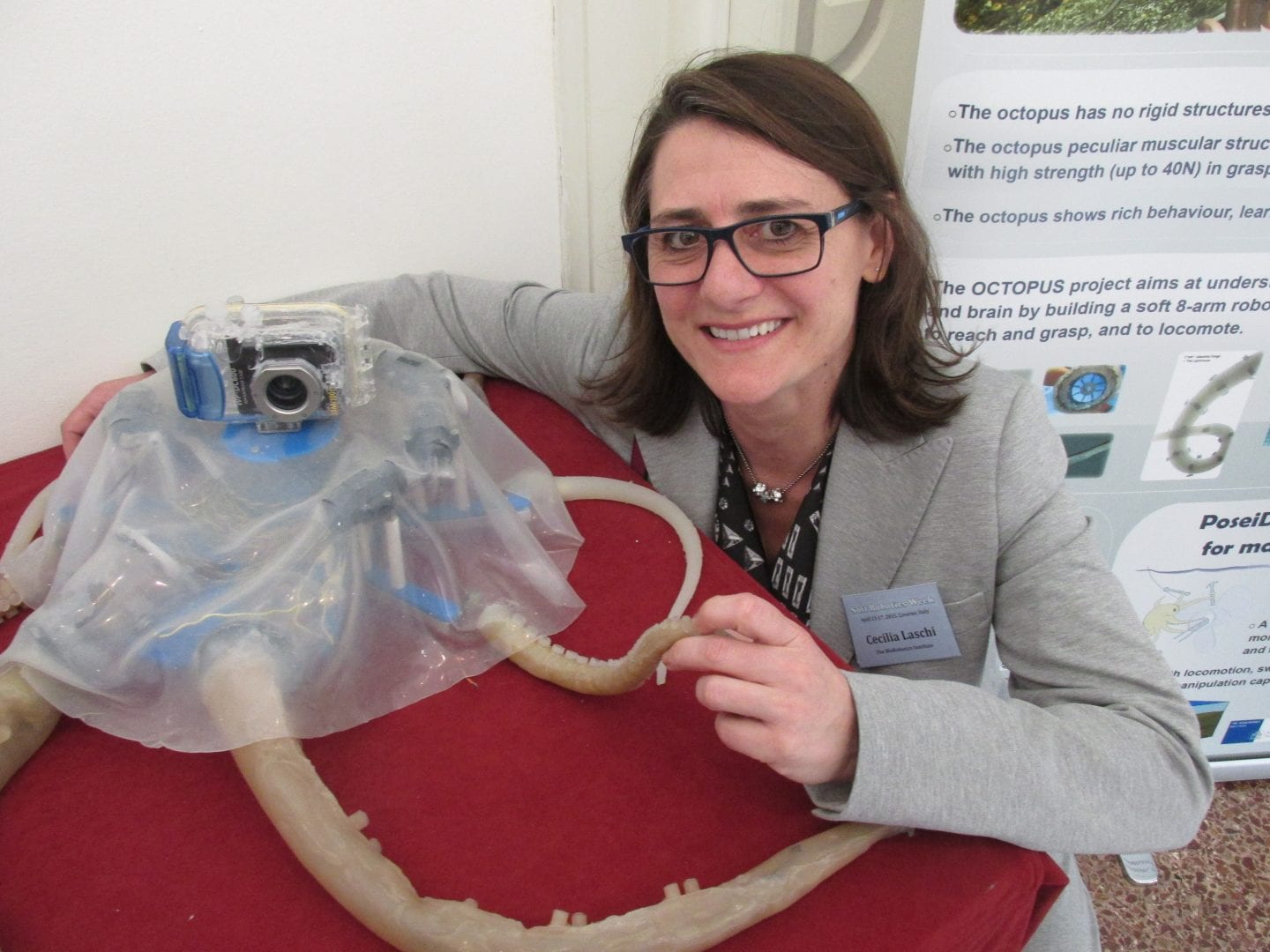
THE LEARNING ZONE
Associate Professor of biorobotics, Cecilia Laschi with her octopus robot
PISA’S elite Scuola Normale Superiore university is based in some of the city’s most historic buildings – but it is producing the intellectuals of tomorrow and boosting the city’s brand.
The university, alongside Scuola Superiore Sant’Anna, is a seat of learning for only the brightest students, having already produced three Nobel Prize winners and two Italian presidents.
But unlike Sant’Anna and the huge Universita di Pisa its graduates rarely stay in the city but leave to work throughout Italy and Europe.
That’s not to say it isn’t vital to the city’s economy.
Despite having just 450 students, it pulls them in from across the country and abroad.
And it’s the prestige and importance the Scuola’s elite status brings that is so valuable to Pisa.
“The students from Universita di Pisa contribute more to the economy by renting flats and using the city’s facilities,” said the Scuola’s Elisa Guidi (below). “But Scuola Normale Superiore brings prestige.”
She said it attracts visits from leading professors and other academics, and the smartest foreign students want to study there.
“Some of them stay when they graduate, but most go to work abroad, though not necessarily where they originally came from,” said Ms Guidi. “At the Universita they stay in Pisa or go home.
“The Scuola is very academic, our graduates go into academia or research.
“We also give them the opportunity to spend some time abroad, which also exports the Scuola Normale name.”
She said the academics also network throughout Europe, including the UK.
“We want to create the talent that can export the name,” she said.
Specialising in the humanities, social and political sciences, history and literature, and in maths, physics, biology, and IT, the Scuola takes only the very sharpest student brains.
They must pass a difficult entrance test, but it recruits from all backgrounds and is state funded.
It also hosts music and drama festivals and promotes culture.
The Scuola was founded by Napoleon in 1810 and is based its original historical building, the Palazzo della Carovana, in the beautiful Piazza dei Cavalieri, right in the medieval heart of Pisa.
The 16th-century Palazzo della Carovana building contains some important historical documents, some dating from 300 years earlier, including a letter written by Niccolò Machiavelli, author of The Prince.
The Scuola moved into the Palazzo della Carovana in 1810. The next-door Palazzo dell’Orologio, a former clock tower, has been cleverly renovated to create a modern library inside the medieval building.
PISA is a city with about 200,000 inhabitants – and more than a quarter are students.
The Italian city prides itself on being among the most educated cities in Europe, with some of the highest achieving students.
And that has a huge impact on the city’s economy, in terms of the wealth those students bring in, and that generated by the commercial activities the seats of learning and the spin-off companies and patents then engender.
Pisa has, like Plymouth – if you include Plymouth College of Art – three universities.
The Universita di Pisa, dating from 1343, is by far the largest, with 53,000 students and 1,527 teaching staff.
It provides general degree education to a mass of students.
But it is Pisa’s two smaller universities that are exceptional when it comes to wealth creation.
Scuola Normale Superiore, set up in 1810, has just 450 students and 99 teachers. But it only takes the elite, many studying arts-based subjects.
Similarly, Scuola Superiore Sant’Anna, set up as recently as 1987, has just 838 students, and 110 lecturers, but again concentrates on high-flyers, particularly scientists.
They have no central campus, but bases across the city, and in neighbouring towns, with students seen, it seems, on every street and in every coffee house.
Factor in the National Research Council’s 15 institutes and 1,500 researchers, and the National Institute of Nuclear Physics’ 300 boffins and its not hard to understand why the city sees the education sector as key to its future success.
Business Editor of the Plymouth Herald discovers some parallels between Pisa and Plymouth
Read more: http://www.plymouthherald.co.uk/8203-Plymouth-Pisa-8211-elite-university-promotes/story-26591817-detail/story.html#ixzz3bSqq8YRj
(Publicity generated by Dorcas Media)







